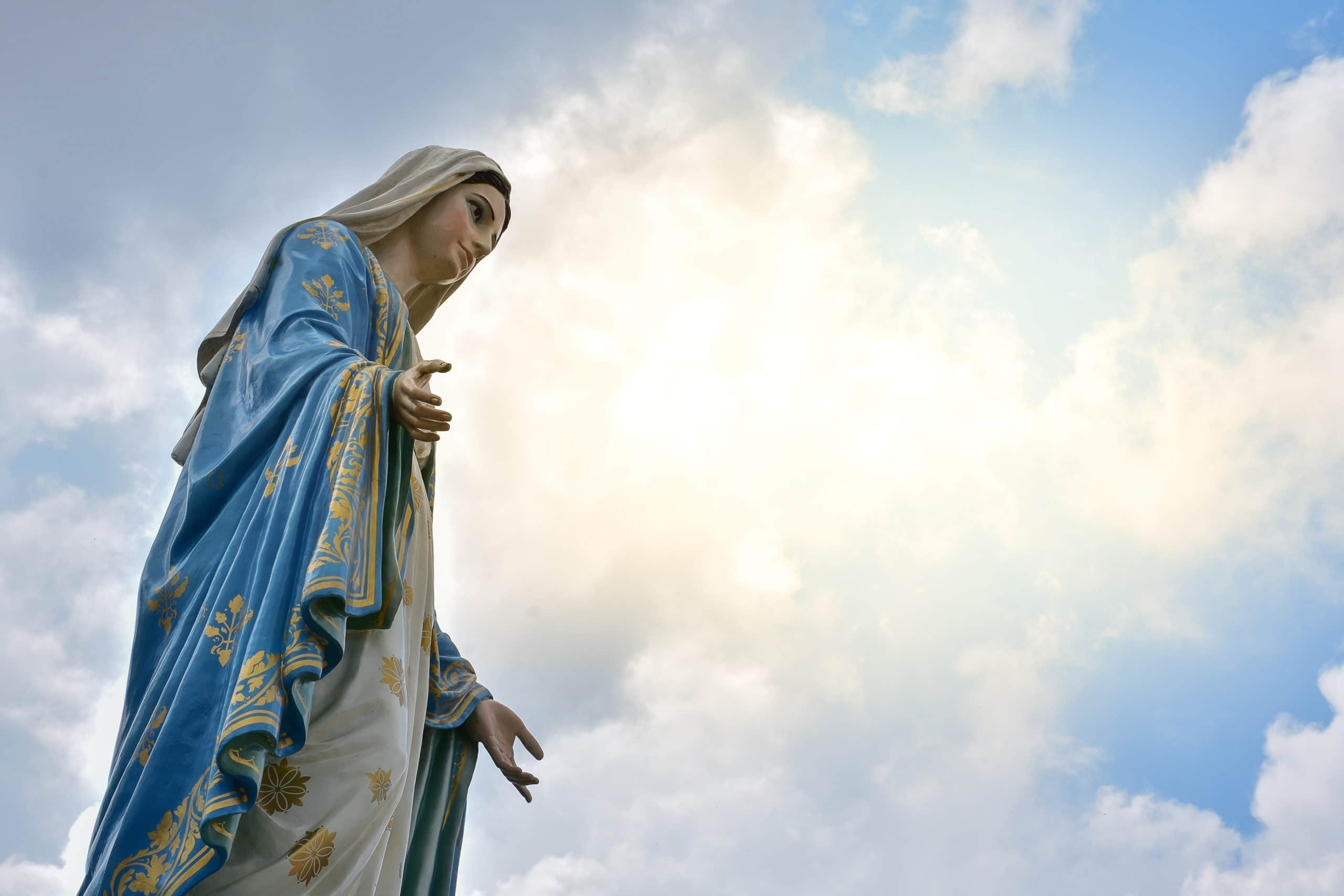
Ever wondered why the Hail Mary is so significant in Catholic tradition? This prayer, cherished by millions, holds a special place in the hearts of believers. Originating from the words of the Archangel Gabriel and Elizabeth in the Bible, it has evolved into a powerful invocation. The Hail Mary is more than just a prayer; it's a connection to the divine, a source of comfort, and a symbol of faith. Whether whispered in moments of need or recited in daily devotion, its impact is profound. Let's uncover 40 intriguing facts about this timeless prayer that continues to inspire and uplift.
Origins of the Hail Mary
The Hail Mary is a central prayer in Christianity, particularly within the Catholic tradition. Its history and significance are rich and fascinating.
- The prayer's roots trace back to the Gospel of Luke in the New Testament.
- The first part of the Hail Mary comes from the angel Gabriel's greeting to Mary: "Hail, full of grace, the Lord is with thee."
- The second part is derived from Elizabeth's words to Mary during the Visitation: "Blessed art thou among women, and blessed is the fruit of thy womb."
- The final petition, "Holy Mary, Mother of God, pray for us sinners now and at the hour of our death," was added later by the Church.
- The prayer was standardized in its current form in the 16th century.
Structure and Meaning
Understanding the structure of the Hail Mary helps appreciate its depth and significance.
- The Hail Mary is divided into two main parts: the angelic salutation and the petition.
- The angelic salutation honors Mary and acknowledges her unique role in salvation history.
- The petition asks Mary to intercede for us, highlighting her role as a mediator.
- The phrase "full of grace" signifies Mary's special favor with God.
- "The Lord is with thee" underscores God's presence in Mary's life.
Cultural Impact
The Hail Mary has influenced various aspects of culture, from art to sports.
- The prayer has inspired countless works of art, including paintings, sculptures, and music.
- In football, a "Hail Mary pass" refers to a long, desperate throw with little chance of success.
- The phrase "Hail Mary" is often used in everyday language to describe a last-ditch effort.
- The prayer is frequently recited in films and television shows, reflecting its cultural significance.
- Many famous composers, including Franz Schubert and Johann Sebastian Bach, have created musical settings for the Hail Mary.
The Hail Mary in Daily Life
For many, the Hail Mary is a staple of daily prayer and devotion.
- Catholics often recite the Hail Mary as part of the Rosary, a popular devotional practice.
- The prayer is commonly said during Mass, particularly in the Liturgy of the Hours.
- Many people turn to the Hail Mary in times of distress or need, seeking comfort and support.
- The prayer is often taught to children as one of their first prayers.
- Some Catholics recite the Hail Mary multiple times a day as part of their personal prayer routine.
Theological Significance
The Hail Mary holds deep theological meaning within the Christian faith.
- The prayer emphasizes the Incarnation, the belief that God became human in the person of Jesus.
- It highlights Mary's role as the Mother of God, a central tenet of Catholic doctrine.
- The Hail Mary reflects the communion of saints, the belief that the faithful on earth can seek the intercession of those in heaven.
- The prayer underscores the importance of humility and obedience, virtues exemplified by Mary.
- It serves as a reminder of the hope of eternal life, asking for Mary's intercession at the hour of death.
Variations and Adaptations
While the Hail Mary is most commonly associated with Catholicism, it has variations and adaptations in other traditions.
- The Eastern Orthodox Church has a similar prayer known as the "Rejoice, O Virgin."
- Some Protestant denominations include the Hail Mary in their liturgical practices.
- The prayer has been translated into numerous languages, reflecting its global reach.
- In some cultures, the Hail Mary is incorporated into traditional hymns and songs.
- There are also shorter versions of the prayer, such as the "Ave Maria," used in specific contexts.
Historical Figures and the Hail Mary
Many saints and historical figures have had a special devotion to the Hail Mary.
- Saint Dominic is traditionally credited with promoting the Rosary, which includes the Hail Mary.
- Saint Louis de Montfort wrote extensively about the importance of the Hail Mary in his spiritual writings.
- Pope John Paul II had a deep devotion to Mary and frequently recited the Hail Mary.
- Saint Teresa of Calcutta often encouraged the recitation of the Hail Mary among her followers.
- Saint Bernadette of Lourdes reported that the Virgin Mary herself prayed the Hail Mary during her apparitions.
Modern-Day Relevance
The Hail Mary continues to be relevant and meaningful in contemporary times.
- The prayer is often used in ecumenical settings to foster unity among different Christian denominations.
- Many Catholic schools and institutions incorporate the Hail Mary into their daily routines.
- The prayer is a common feature of Marian pilgrimages and shrines around the world.
- The Hail Mary is frequently included in prayer apps and digital resources, making it accessible to a wider audience.
- Despite changes in society, the Hail Mary remains a timeless expression of faith and devotion.
The Final Word on Hail Mary
Hail Mary, a prayer deeply rooted in Christian tradition, holds a special place in the hearts of many. Its origins trace back centuries, blending biblical texts and church traditions. The prayer's structure, with its blend of praise and petition, offers comfort and a sense of connection to the divine. Whether recited in times of need or as part of daily devotion, Hail Mary remains a powerful expression of faith.
Understanding its history and significance can deepen one's appreciation for this timeless prayer. From its humble beginnings to its widespread use today, Hail Mary continues to inspire and uplift countless individuals. So next time you hear or say this prayer, remember its rich background and the countless voices that have echoed its words through the ages. It's more than just a prayer; it's a link to a long-standing tradition of faith and devotion.
Was this page helpful?
Our commitment to delivering trustworthy and engaging content is at the heart of what we do. Each fact on our site is contributed by real users like you, bringing a wealth of diverse insights and information. To ensure the highest standards of accuracy and reliability, our dedicated editors meticulously review each submission. This process guarantees that the facts we share are not only fascinating but also credible. Trust in our commitment to quality and authenticity as you explore and learn with us.


